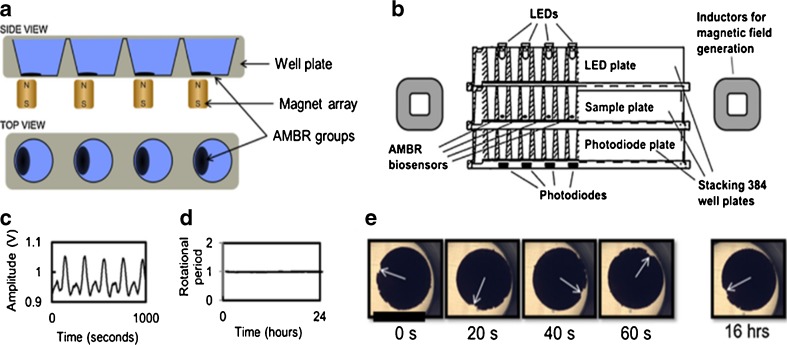Fig. 3.
Asynchronous magnetic bead rotation (AMBR) sensor consisting of self-assembled magnetic particles to which bacteria adhere. Applying a magnetic field results in rotation of the magnetic beads. Bacterial growth leads to a change in viscosity and, subsequently, in the amount of rotational periods. a Side and top views of the array showing sample and sensor. b Cross-sectional view of the setup. c Data of a single photo diode, with every peak representing one rotation of the sensor. d Normalisation of the rotational period over 24 h. e Microscopic images of the AMBR sensor rotation in one well at different time points. Adapted from Kinnunen et al. [59] with permission from Elsevier

